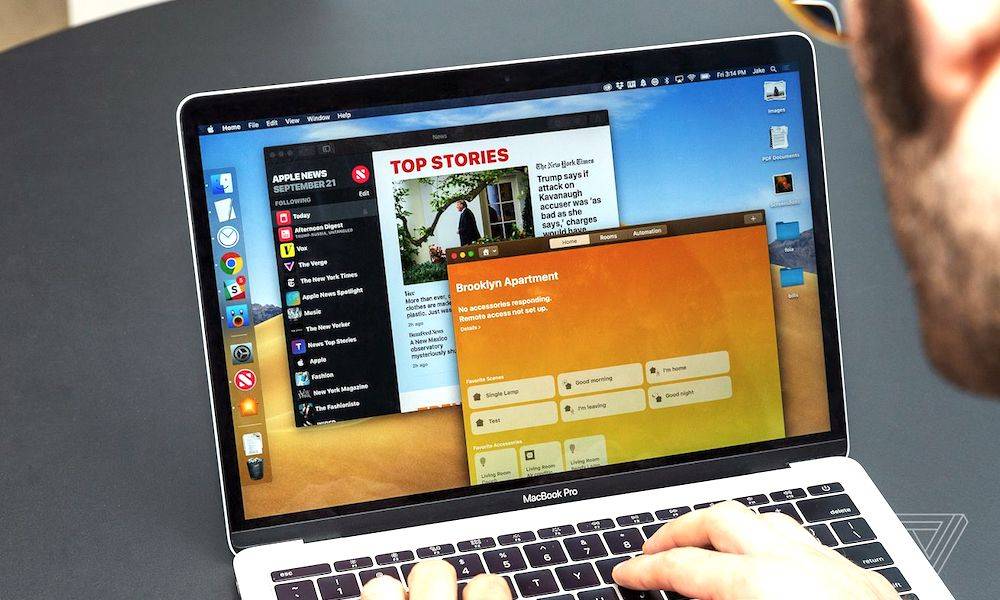macOS 10.15 Is Coming, But What Will Apple Call It?
 Credit: The Verge
Credit: The Verge
Toggle Dark Mode
While it’s almost certain that we’re going to see macOS 10.15 unveiled on Monday at Apple’s Worldwide Developers Conference, and we have a few ideas on what features it will include, one thing that hasn’t leaked out at all yet is the actual moniker that will be given to Apple’s latest desktop operating system.
Unlike Apple’s mobile operating systems — iOS, tvOS, and watchOS — the company has always given an actual name to its desktop counterpart. The first nine releases used cat-themed names — Cheetah, Puma, Jaguar, Panther, Tiger, Leopard, Snow Leopard, Lion, and Mountain Lion — before Apple clearly ran out of felines and opted to switch to a list of California landmarks instead: Mavericks, Yosemite, El Capitan, Sierra, High Sierra, and Mojave.
With plenty of eligible California locations remaining, there’s no indication that Apple’s set to abandon this naming convention, but thinking about which one the company will go with makes for some fun speculation, and MacRumors has done some groundwork to narrow down the list to what it believes are four likely candidates.
In fact, Apple took proactive steps to lock down a whole set of potential names right around the time that it released Mavericks back in 2013, filing for trademarks through a series of shell companies in hopes of keeping the registrations at an arms length from Apple itself. MacRumors’ Editor-in-Chief Eric Slivka compiled a list of 19 trademarks back in 2014, applied for under six different companies that could all be loosely traced back to Apple. Among those trademarks were Yosemite, Sierra, and Mojave, which of course have now been used by subsequent macOS versions, but there are now still four remaining for Apple to choose from.
As Slivka explains, many of the original trademarks have since lapsed, as the U.S. trademark application process doesn’t allow for owners to simply squat on names and leave them unused — they’re required to submit proof that the trademarks are actually being used in commerce within 36 months of the trademark being approved. With the number of years that have passed, many of the 19 names from the original list have now been abandoned, but with the back-and-forth required during the application process, a few of the names took longer to actually reach the approval level, meaning the clock requiring proof of use for these would have started later than others.
The four that remain are Mammoth, Monterey, Rincon, and Skyline, making for a strong case that one of these will be the name given to macOS 10.15. In fact, Mammoth only recently received its trademark approval earlier this month, following several years of delays and a more recent flurry of activity to get it up and running. The trademark is owned by Yosemite Research LLC, but the attorney of record was shifted to Glenn Gundersen, who is known for working with Apple on various intellectual property issues. The timing could simply be a coincidental result of the way that bureaucracy works when it comes to trademark approvals, as it was driven by deadlines set by the U.S. Patent and Trademark office, and Apple may simply wish to keep the name in reserve for a future version of macOS rather than abandoning the application entirely.
Mammoth itself is likely associated with Mammoth Lakes and Mammoth Mountain, a popular skiing and hiking area in the Sierra Nevada mountains. Other options, however, include Monterey, a historic city and popular vacation spot on the Pacific coast, Rincon, a popular surfing area in Southern California, and Skyline, which likely refers to the scenic Skyline Boulevard, or State Route 35, that runs along the ridge of the Santa Cruz Mountains.
Of the list of four potential names, Apple has until 2021 to use Monterey and Skyline, and of course the just-approved Mammoth will be good until early 2022. On the other hand, if Apple doesn’t use Rincon by this August, that trademark will be lost, meaning that unless Apple is going to abandon it entirely, Rincon is actually the most likely candidate among the four, since the other three can easily be held in reserve for macOS 10.16 and beyond.
Of course, there’s also no requirement for Apple to use any of those four names. Despite the other registered names, Apple’s choice of El Capitan for macOS 10.11 came out of the blue (although “El Cap” had been trademarked previously), and High Sierra was used for macOS 10.13 as an adaptation of the prior Sierra name. For the most part, there are rarely any direct connections between the names that Apple chooses and the features that are introduced in each version of macOS, so any of the names could be fair game this year.






